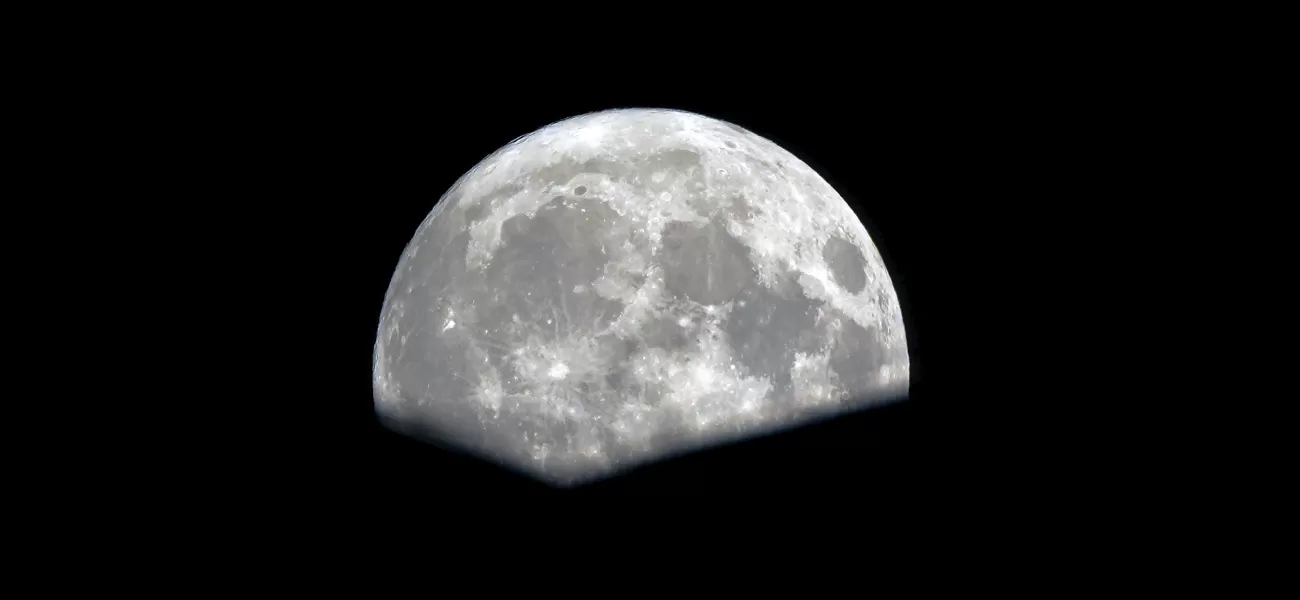The moon possibly had a massive lava ocean in the past.
New study reveals moon had a vast magma ocean in the past, based on soil samples from unexplored area.
August 21st 2024.

New research has revealed intriguing insights into the composition of the moon's surface. A team of scientists from India's Physical Research Laboratory have analyzed soil samples collected by the country's Vikram lander and Pragyan rover during a successful mission near the moon's south pole last year. The findings, published today in Springer Nature, suggest that the moon was once covered by a vast ocean of magma.
For many years, lunar missions had primarily focused on collecting samples from the moon's mid-latitudes, closer to its equator. But in August of last year, India's Vikram lander made a soft landing near the moon's south pole, and its accompanying rover, Pragyan, was able to collect 23 soil samples from various spots along the lunar surface. These samples were then analyzed, revealing a relatively uniform composition of soil in the surface layer.
The majority of the soil was found to be made up of a type of rock called ferroan anorthosite, which is remarkably similar to soil samples collected by previous missions, such as Apollo 16 and Luna-20. This supports the theory that when the moon was formed around 4.5 billion years ago, it was covered in a vast ocean of magma. As the moon cooled, the less dense ferroan anorthosite rocks floated to the surface to form its crust, while heavier minerals sank to form its mantle.
However, the researchers also discovered magnesium minerals in the soil, which cannot be explained by the theory of a magma ocean. These minerals were found near the site of the South Pole-Aitken basin, the moon's largest and deepest impact basin. The team suggests that these minerals were likely excavated from below the moon's surface during the impact that formed the basin, which measures a whopping 2500km across and between six and eight kilometers deep.
This new research sheds light on the moon's complex geologic history and raises new questions about its formation. The team's findings provide valuable information for future missions to the moon and help us better understand the mysteries of our closest celestial neighbor. With ongoing advancements in space exploration, we can only imagine what other secrets the moon may hold for us to uncover.
For many years, lunar missions had primarily focused on collecting samples from the moon's mid-latitudes, closer to its equator. But in August of last year, India's Vikram lander made a soft landing near the moon's south pole, and its accompanying rover, Pragyan, was able to collect 23 soil samples from various spots along the lunar surface. These samples were then analyzed, revealing a relatively uniform composition of soil in the surface layer.
The majority of the soil was found to be made up of a type of rock called ferroan anorthosite, which is remarkably similar to soil samples collected by previous missions, such as Apollo 16 and Luna-20. This supports the theory that when the moon was formed around 4.5 billion years ago, it was covered in a vast ocean of magma. As the moon cooled, the less dense ferroan anorthosite rocks floated to the surface to form its crust, while heavier minerals sank to form its mantle.
However, the researchers also discovered magnesium minerals in the soil, which cannot be explained by the theory of a magma ocean. These minerals were found near the site of the South Pole-Aitken basin, the moon's largest and deepest impact basin. The team suggests that these minerals were likely excavated from below the moon's surface during the impact that formed the basin, which measures a whopping 2500km across and between six and eight kilometers deep.
This new research sheds light on the moon's complex geologic history and raises new questions about its formation. The team's findings provide valuable information for future missions to the moon and help us better understand the mysteries of our closest celestial neighbor. With ongoing advancements in space exploration, we can only imagine what other secrets the moon may hold for us to uncover.
[This article has been trending online recently and has been generated with AI. Your feed is customized.]
[Generative AI is experimental.]
0
0
Submit Comment





